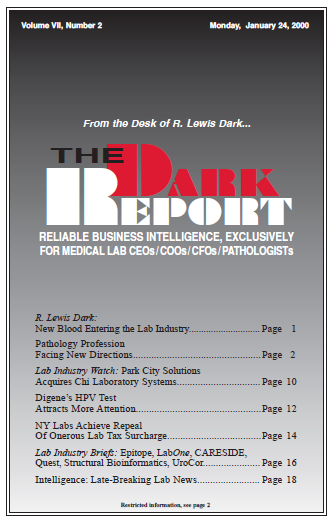CEO SUMMARY: Big changes ahead during the next decade. Among the predictions: the number of two and three-pathologist group practices will radically diminish; pathology centers of excellence will achieve new market dominance; and…ever more intense competition for anatomic pathology specimens! At the same time, expect this decade to bolster the professional status of pathologists. IF …
Pathology Profession Facing New Directions Read More »
To access this post, you must purchase The Dark Report.


